List Of Ancient Monuments In Rome on:
[Wikipedia]
[Google]
[Amazon]
This is a list of ancient monuments from Republican and Imperial periods in the city of
 * Baths of Agrippa
*
* Baths of Agrippa
*

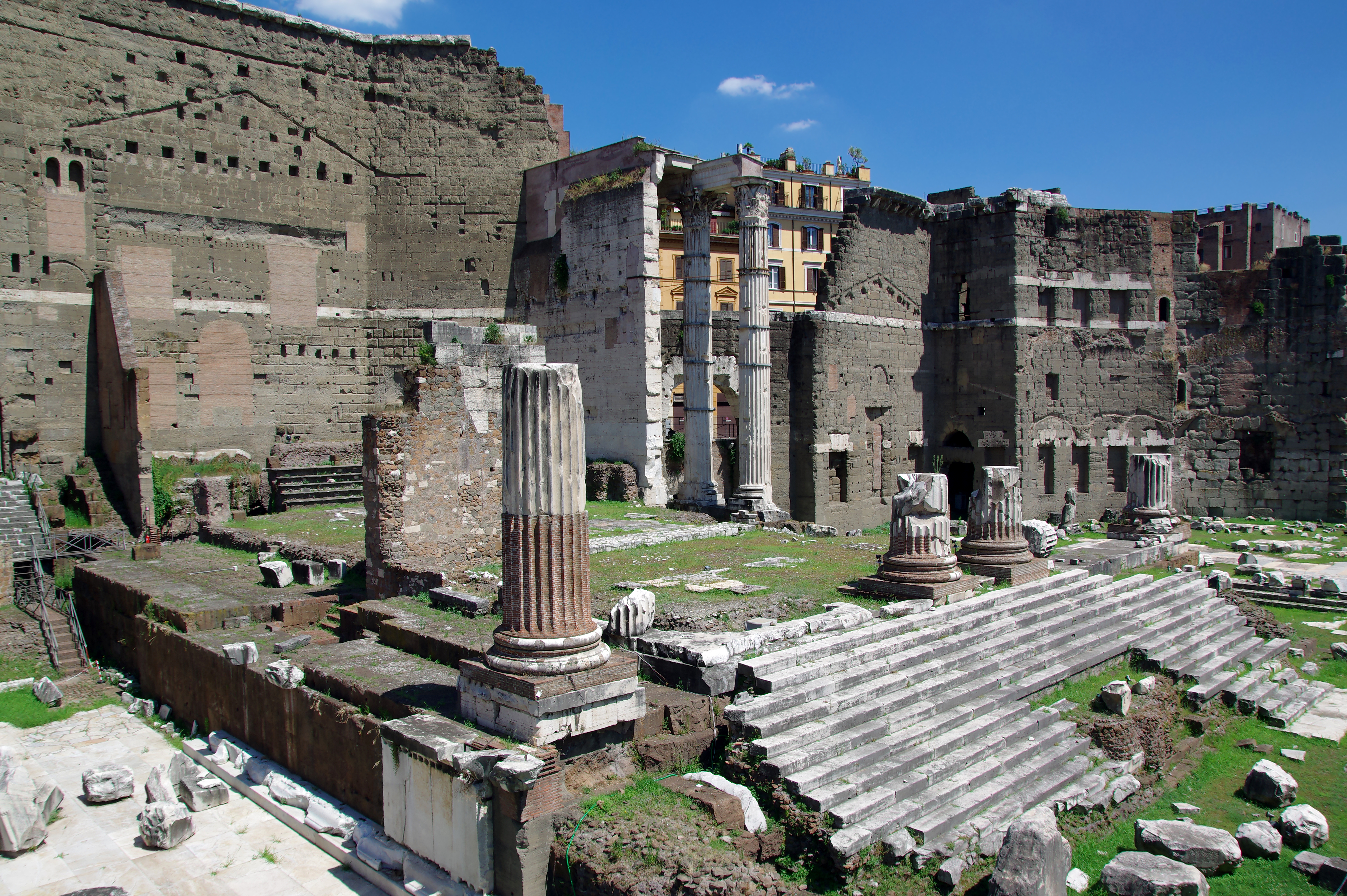


 * Aqua Alexandrina
* Aqua Alsietina
* Aqua Anio Novus
* Aqua Anio Vetus
* Aqua Appia
* Aqua Augusta
*
* Aqua Alexandrina
* Aqua Alsietina
* Aqua Anio Novus
* Aqua Anio Vetus
* Aqua Appia
* Aqua Augusta
*
 * Catacomb of Calepodius
* Catacomb of Callixtus
* Catacombs of Marcellinus and Peter
*
* Catacomb of Calepodius
* Catacomb of Callixtus
* Catacombs of Marcellinus and Peter
*
 * Castra of ancient Rome
* Castra Nova equitum singularium
* Castra Peregrina
* Castra Praetoria
* Castra of ancient Rome
* Castra Nova equitum singularium
* Castra Peregrina
* Castra Praetoria

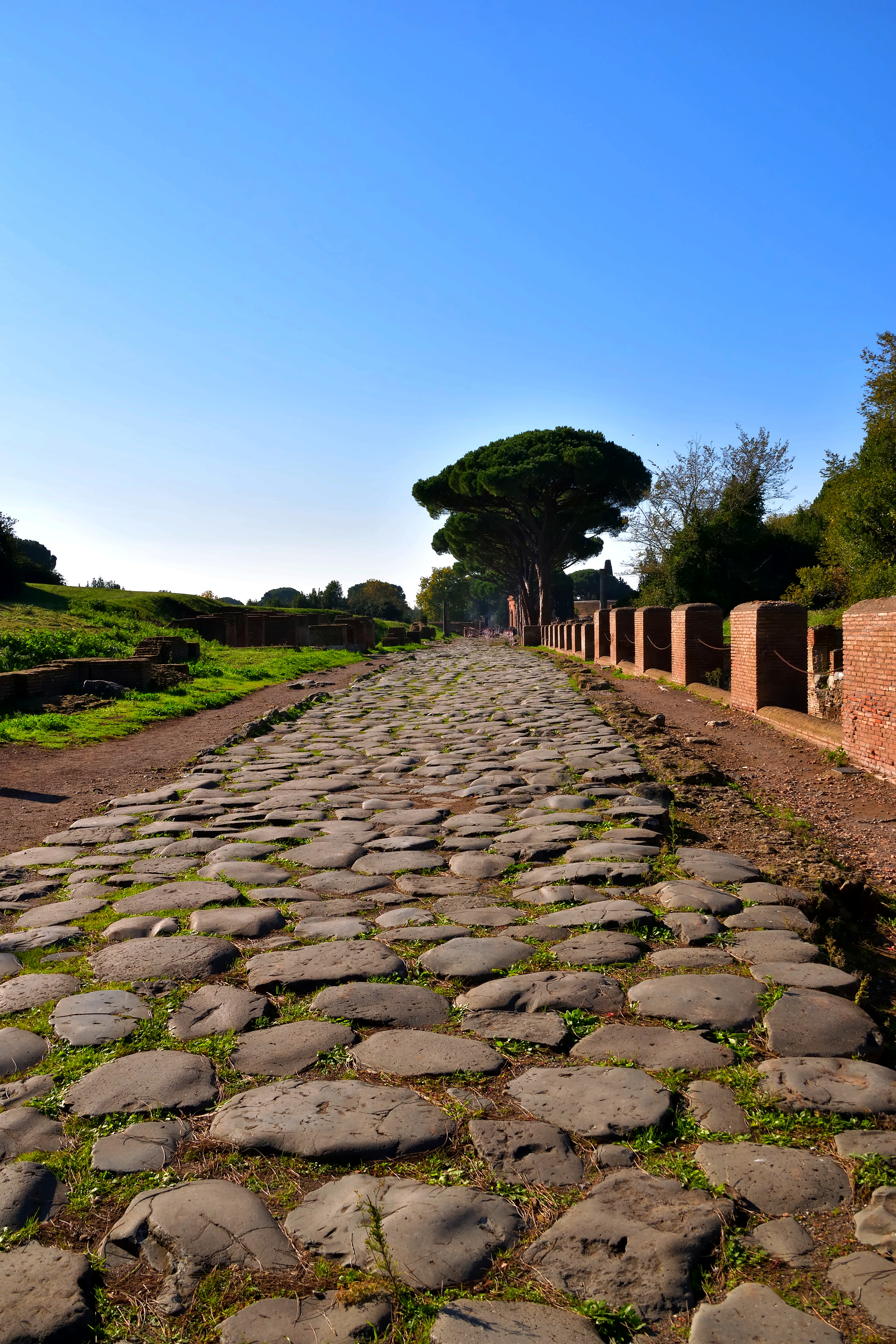
 * Alta Semita
* Argiletum
* Clivus Argentarius
* Clivus Capitolinus
* Clivus Palatinus
* Clivus Scauri
* Clivus Suburanus
* Via Appia
* Via Ardeatina
* Via Asinaria
* Via Aurelia
* Via Cornelia
*
* Alta Semita
* Argiletum
* Clivus Argentarius
* Clivus Capitolinus
* Clivus Palatinus
* Clivus Scauri
* Clivus Suburanus
* Via Appia
* Via Ardeatina
* Via Asinaria
* Via Aurelia
* Via Cornelia
*
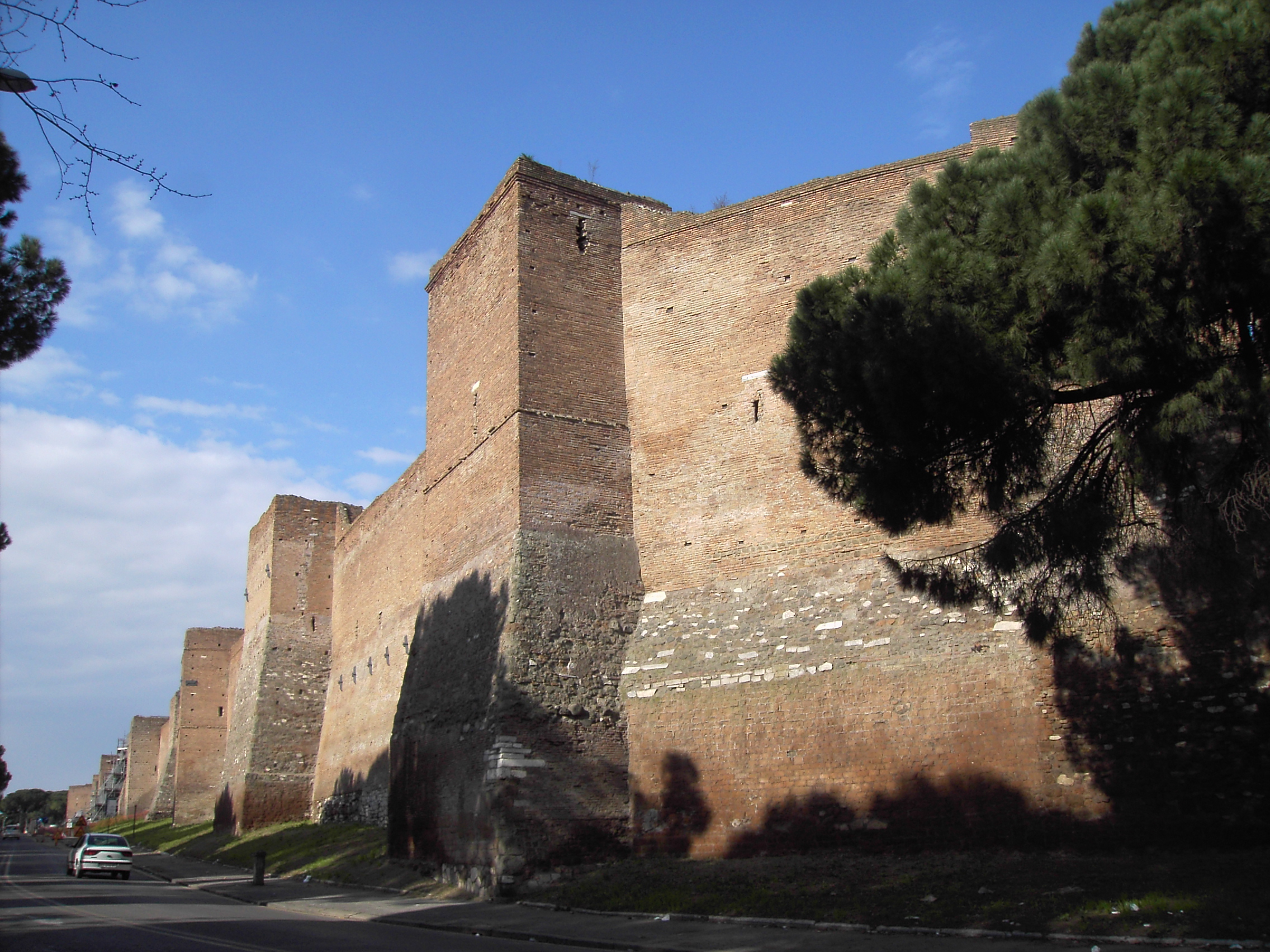

 * Wall of Romulus
* Servian Wall
** Porta Caelimontana
** Porta Capena
** Porta Carmentalis
** Porta Collina
** Porta Esquilina
** Porta Flumentana
** Porta Fontinalis
** Porta Lavernalis
** Porta Naevia
** Porta Querquetulana
** Porta Quirinalis
** Porta Raudusculana
** Porta Salutaris
** Porta Sanqualis
** Porta Trigemina
** Porta Viminale
* Aurelian Walls
** Porta Appia
** Porta Ardeatina
** Porta Asinaria
** Porta Aurelia Pancraziana
** Porta Aurelia-Sancti Petri
** Porta Clausa
** Porta Flaminia
** Porta Latina
** Porta Praenestina
** Porta Metronia
** Porta Nomentana
** Porta Ostiensis
** Porta Pinciana
** Porta Portese
** Porta Praetoriana
** Porta Principalis Dextera
** Porta Salaria
** Porta Septimiana
** Porta Tiburtina
* Wall of Romulus
* Servian Wall
** Porta Caelimontana
** Porta Capena
** Porta Carmentalis
** Porta Collina
** Porta Esquilina
** Porta Flumentana
** Porta Fontinalis
** Porta Lavernalis
** Porta Naevia
** Porta Querquetulana
** Porta Quirinalis
** Porta Raudusculana
** Porta Salutaris
** Porta Sanqualis
** Porta Trigemina
** Porta Viminale
* Aurelian Walls
** Porta Appia
** Porta Ardeatina
** Porta Asinaria
** Porta Aurelia Pancraziana
** Porta Aurelia-Sancti Petri
** Porta Clausa
** Porta Flaminia
** Porta Latina
** Porta Praenestina
** Porta Metronia
** Porta Nomentana
** Porta Ostiensis
** Porta Pinciana
** Porta Portese
** Porta Praetoriana
** Porta Principalis Dextera
** Porta Salaria
** Porta Septimiana
** Porta Tiburtina
 *
*
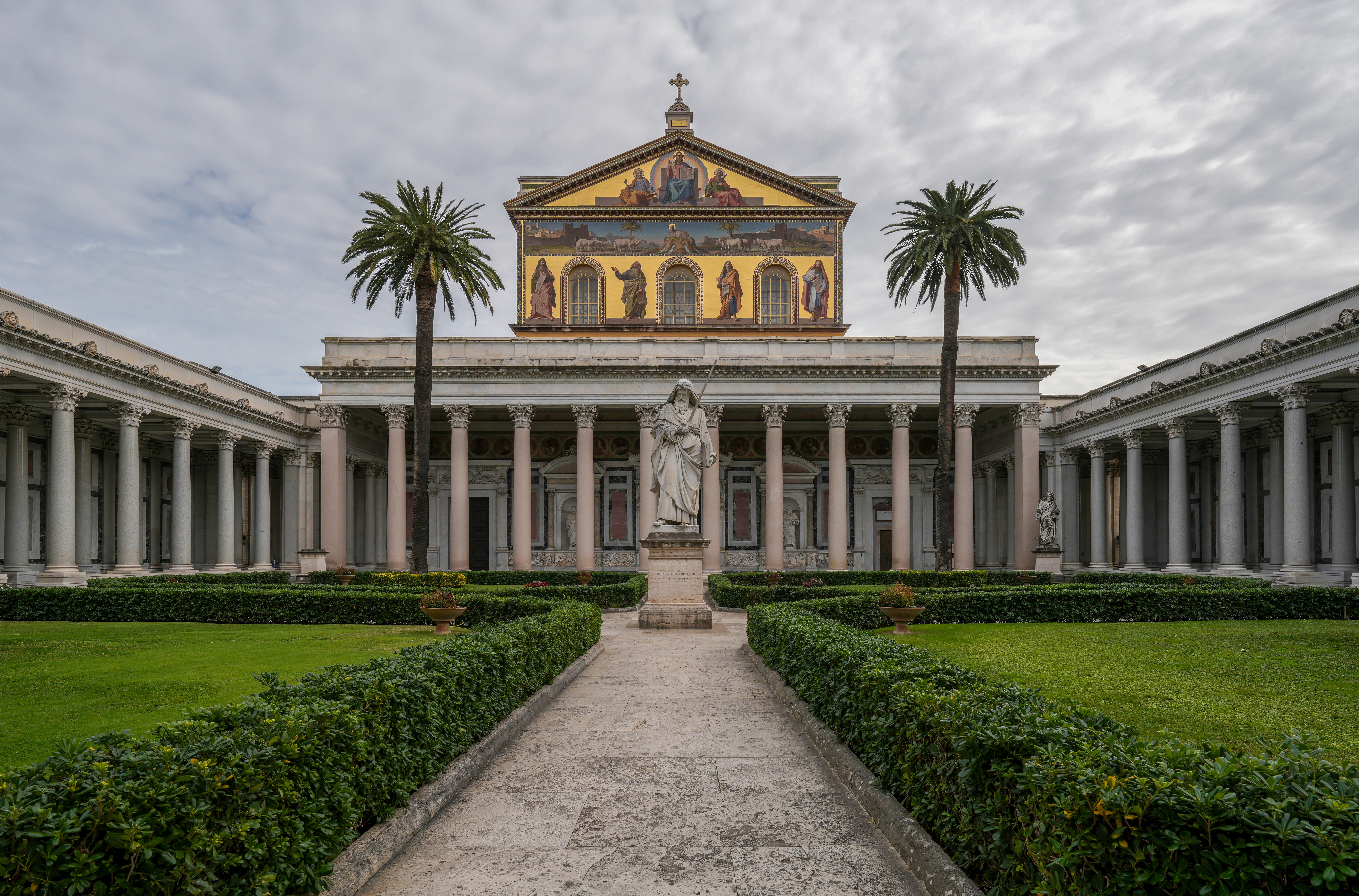 * Basilica di San Clemente
* Basilica di Santa Maria Maggiore
* Basilica of Saint Paul Outside the Walls
* Basilica of St. John Lateran
** Lateran Baptistery
* Old St. Peter's Basilica
* San Sebastiano fuori le mura
* San Pietro in Vincoli
* Santa Costanza
* Santa Pudenziana
* Santa Sabina
* Basilica di San Clemente
* Basilica di Santa Maria Maggiore
* Basilica of Saint Paul Outside the Walls
* Basilica of St. John Lateran
** Lateran Baptistery
* Old St. Peter's Basilica
* San Sebastiano fuori le mura
* San Pietro in Vincoli
* Santa Costanza
* Santa Pudenziana
* Santa Sabina
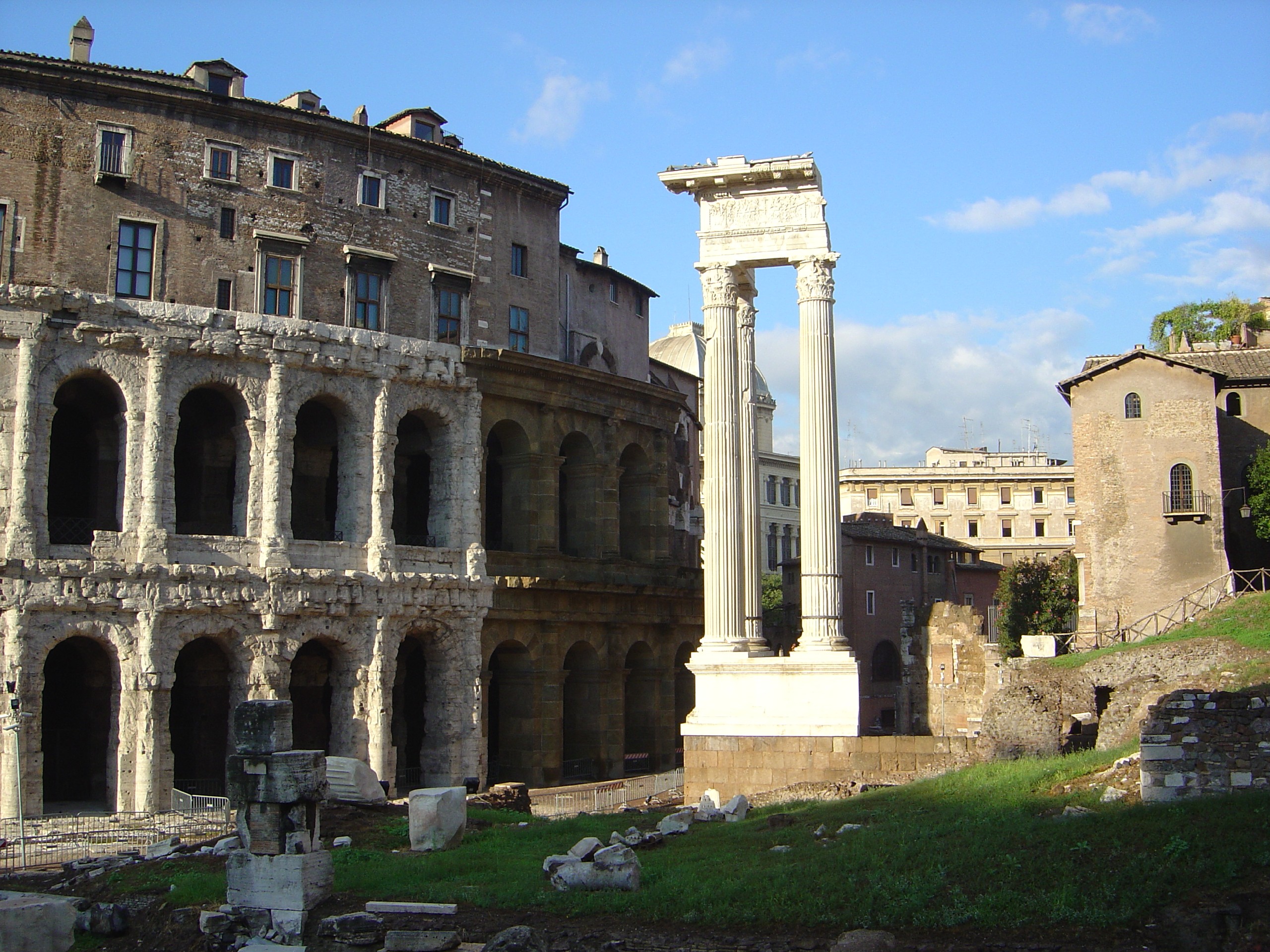 * Pantheon
* Temple of Apollo Sosianus
* Temple of Bellona
* Temple of Feronia
* Temple of Fortuna Equestris
* Temple of Hadrian
* Temple of Hercules Custos
* Temple of Hercules Musarum
* Temple of Isis and Serapis
* Temple of Juno Regina
* Temple of Jupiter Stator
* Temple of Juturna
* Temple of the Lares
* Temple of Matidia
* Temple of the Sun
* Temple of Mars
* Temple of Minerva Chalcidica
* Temple of Neptunus
* Temple of Fortuna Huiusce Diei
* Temple of the Nymphs
* Temple of Vulcanus
* Pantheon
* Temple of Apollo Sosianus
* Temple of Bellona
* Temple of Feronia
* Temple of Fortuna Equestris
* Temple of Hadrian
* Temple of Hercules Custos
* Temple of Hercules Musarum
* Temple of Isis and Serapis
* Temple of Juno Regina
* Temple of Jupiter Stator
* Temple of Juturna
* Temple of the Lares
* Temple of Matidia
* Temple of the Sun
* Temple of Mars
* Temple of Minerva Chalcidica
* Temple of Neptunus
* Temple of Fortuna Huiusce Diei
* Temple of the Nymphs
* Temple of Vulcanus
 * Temple of Hercules Pompeianus
* Temple of Hercules Victor
* Temple of Fortuna
* Temple of Mater Matuta
* Temple of Portunus
* Temple of Pudicitia Patricia
* Temple of Hercules Pompeianus
* Temple of Hercules Victor
* Temple of Fortuna
* Temple of Mater Matuta
* Temple of Portunus
* Temple of Pudicitia Patricia
 * Temple of Antoninus and Faustina
* Temple of Caesar
* Temple of Castor and Pollux
* Temple of Concord
* Temple of Janus
* Temple of Romulus
*
* Temple of Antoninus and Faustina
* Temple of Caesar
* Temple of Castor and Pollux
* Temple of Concord
* Temple of Janus
* Temple of Romulus
*
 * Temple of Mars Ultor
* Temple of Minerva
* Temple of Trajan
* Temple of Peace
* Temple of Venus Genetrix
* Temple of Mars Ultor
* Temple of Minerva
* Temple of Trajan
* Temple of Peace
* Temple of Venus Genetrix
ROME
at LacusCurtius {{Ancient Roman architecture lists *Monuments Monuments Ancient monuments
Rome
Rome (Italian language, Italian and , ) is the capital city and most populated (municipality) of Italy. It is also the administrative centre of the Lazio Regions of Italy, region and of the Metropolitan City of Rome. A special named with 2, ...
, Italy
Italy, officially the Italian Republic, is a country in Southern Europe, Southern and Western Europe, Western Europe. It consists of Italian Peninsula, a peninsula that extends into the Mediterranean Sea, with the Alps on its northern land b ...
.
Amphitheaters
* Amphitheater of Caligula * Amphitheatrum Castrense * Amphitheater of Nero * Amphitheater of Statilius Taurus *Colosseum
The Colosseum ( ; , ultimately from Ancient Greek word "kolossos" meaning a large statue or giant) is an Ellipse, elliptical amphitheatre in the centre of the city of Rome, Italy, just east of the Roman Forum. It is the largest ancient amphi ...
Baths
 * Baths of Agrippa
*
* Baths of Agrippa
* Baths of Caracalla
The Baths of Caracalla () in Rome, Italy, were the city's second largest Ancient Rome, Roman public baths, or ''thermae'', after the Baths of Diocletian. The baths were likely built between AD 212 (or 211) and 216/217, during the reigns of empero ...
* Baths of Commodus
* Baths of Constantine
* Baths of Decius
* Baths of Diocletian
The Baths of Diocletian (Latin: ''Thermae Diocletiani'', Italian: ''Terme di Diocleziano'') were public baths in ancient Rome. Named after emperor Diocletian and built from AD 298 to 306, they were the largest of the imperial baths. The project w ...
* Baths of Licinius Sura
* Baths of Nero and Alexander
* Baths of Septimius Severus
* Baths of Titus
* Baths of Trajan (later misnamed the Baths of Domitian)
Circuses
* Circus Flaminius *Circus Maximus
The Circus Maximus (Latin for "largest circus"; Italian language, Italian: ''Circo Massimo'') is an ancient Roman chariot racing, chariot-racing stadium and mass entertainment venue in Rome, Italy. In the valley between the Aventine Hill, Avent ...
* Circus of Maxentius
* Circus of Nero
The so-called Circus of Nero or Circus of Caligula was a circus (building), circus in ancient Rome, located mostly in the present-day Vatican City.
It was first built under Caligula.
History
The ''Ager Vaticanus'', the alluvial plain outs ...
* Circus Varianus
Gardens
* Gardens of Lucullus * Gardens of Maecenas * Gardens of Sallust * Horti Aciliorum * Horti Agrippinae * Horti Caesaris * Horti Domitiae * Horti Lamiani * Horti Liciniani * Horti Lolliani * Horti Pompeiani * Horti TaurianiPorticoes
* Porticus Aemilia * Porticus Deorum Consentium * Porticus of Livia * Porticus Octavia * Porticus Octaviae * Porticus VipsaniaTheatres
* Theatre of Balbus * Theatre of Marcellus * Theatre of PompeyOther
* Ludus Magnus * Naumachia Vaticana * Odeum of Domitian * Saepta Julia * Septizodium *Stadium of Domitian
The Stadium of Domitian (), also known as the ''Circus Agonalis'', was located under the present Piazza Navona which follows its outline and incorporates its remains, to the north of the ancient Campus Martius in Rome, Italy. The Stadium was com ...
Economy




Fora
Forum Romanum
*Roman Forum
A forum (Latin: ''forum'', "public place outdoors", : ''fora''; English : either ''fora'' or ''forums'') was a public square in a municipium, or any civitas, of Ancient Rome reserved primarily for the vending of goods; i.e., a marketplace, alon ...
Imperial fora
* Forum of Augustus * Forum of Caesar *Forum of Nerva
Forum of Nerva (; ) is an ancient structure in Rome, Italy, chronologically the next to the last of the Imperial fora built.
Forum of Nerva (Forum Transitorium)
The Imperial fora within the city of Rome have, in recent decades, become again a ...
* Forum of Peace
* Trajan's Forum
Markets
*Forum Boarium
The Forum Boarium (, ) was the cattle market or '' forum venalium'' of ancient Rome. It was located on a level piece of land near the Tiber between the Capitoline, the Palatine and Aventine hills. As the site of the original docks of Rome () ...
* Forum Holitorium
* Forum Piscarium
* Forum Pistorium
* Forum Suarium
* Forum venalium
* Forum Vinarium
* Trajan's Market
Shops
* Macellum LiviaeInfrastructure
Aqueducts
Aqua Claudia
Aqua Claudia ("the Claudius, Claudian water") was an ancient Roman aqueduct that, like the Aqua Anio Novus, was begun by Emperor Caligula (37–41 AD) in 38 AD and finished by Emperor Claudius (41–54 AD) in 52 AD.
It was the eighth aqueduct to ...
* Aqua Julia
* Aqua Marcia
* Aqua Tepula
* Aqua Traiana
* Aqua Virgo
Bridges
* Pons Aelius * Pons Aemilius * Pons Agrippae * Pons Aurelius * Pons Cestius * Pons Fabricius * Pons Lamentanus * Pons Milvius * Pons Neronianus * Pons Probi * Pons SubliciusCemeteries
 * Catacomb of Calepodius
* Catacomb of Callixtus
* Catacombs of Marcellinus and Peter
*
* Catacomb of Calepodius
* Catacomb of Callixtus
* Catacombs of Marcellinus and Peter
* Catacombs of Rome
The Catacombs of Rome () are ancient catacombs, underground burial places in and around Rome, of which there are at least forty, some rediscovered since 1578, others even as late as the 1950s.
There are more than fifty catacombs in the underg ...
* Catacombs of San Valentino
* Columbarium of Pomponius Hylas
The Columbarium of Pomponius Hylas is a 1st-century CE Roman columbarium, situated near the Porta Latina on the Via di Porta Latina, Rome, Italy. It was discovered and excavated in 1831 by Pietro Campana.
Though its name derives from Pomponius H ...
* Esquiline Necropolis
* Vatican Necropolis
Fountains
* Meta SudansMilitary
 * Castra of ancient Rome
* Castra Nova equitum singularium
* Castra Peregrina
* Castra Praetoria
* Castra of ancient Rome
* Castra Nova equitum singularium
* Castra Peregrina
* Castra Praetoria
Roads


 * Alta Semita
* Argiletum
* Clivus Argentarius
* Clivus Capitolinus
* Clivus Palatinus
* Clivus Scauri
* Clivus Suburanus
* Via Appia
* Via Ardeatina
* Via Asinaria
* Via Aurelia
* Via Cornelia
*
* Alta Semita
* Argiletum
* Clivus Argentarius
* Clivus Capitolinus
* Clivus Palatinus
* Clivus Scauri
* Clivus Suburanus
* Via Appia
* Via Ardeatina
* Via Asinaria
* Via Aurelia
* Via Cornelia
* Via Flaminia
The Via Flaminia () was an ancient Roman roads, Roman road leading from Rome over the Apennine Mountains to ''Ariminum'' (Rimini) on the coast of the Adriatic Sea, and due to the ruggedness of the mountains was the major option the Romans had f ...
* Via Labicana
* Via Lata
* Via Latina
* Via Laurentina
* Via Ostiensis
* Via Portuensis
* Via Praenestina
The Via Praenestina (modern Italian: Via Prenestina) was an ancient Roman road in central Italy.
Initially called Via Gabiana, from Gabii, the ancient city of Old Latium to which it ran, it received a new name having been extended as far as Pr ...
* Via Sacra
* Via Salaria
* Via Tiburtina
* Vicus Jugarius
* Vicus Longus
* Vicus Patricius
* Vicus Tuscus
Sewers
* Cloaca Circi Maximi * Cloaca MaximaWalls / Gates

 * Wall of Romulus
* Servian Wall
** Porta Caelimontana
** Porta Capena
** Porta Carmentalis
** Porta Collina
** Porta Esquilina
** Porta Flumentana
** Porta Fontinalis
** Porta Lavernalis
** Porta Naevia
** Porta Querquetulana
** Porta Quirinalis
** Porta Raudusculana
** Porta Salutaris
** Porta Sanqualis
** Porta Trigemina
** Porta Viminale
* Aurelian Walls
** Porta Appia
** Porta Ardeatina
** Porta Asinaria
** Porta Aurelia Pancraziana
** Porta Aurelia-Sancti Petri
** Porta Clausa
** Porta Flaminia
** Porta Latina
** Porta Praenestina
** Porta Metronia
** Porta Nomentana
** Porta Ostiensis
** Porta Pinciana
** Porta Portese
** Porta Praetoriana
** Porta Principalis Dextera
** Porta Salaria
** Porta Septimiana
** Porta Tiburtina
* Wall of Romulus
* Servian Wall
** Porta Caelimontana
** Porta Capena
** Porta Carmentalis
** Porta Collina
** Porta Esquilina
** Porta Flumentana
** Porta Fontinalis
** Porta Lavernalis
** Porta Naevia
** Porta Querquetulana
** Porta Quirinalis
** Porta Raudusculana
** Porta Salutaris
** Porta Sanqualis
** Porta Trigemina
** Porta Viminale
* Aurelian Walls
** Porta Appia
** Porta Ardeatina
** Porta Asinaria
** Porta Aurelia Pancraziana
** Porta Aurelia-Sancti Petri
** Porta Clausa
** Porta Flaminia
** Porta Latina
** Porta Praenestina
** Porta Metronia
** Porta Nomentana
** Porta Ostiensis
** Porta Pinciana
** Porta Portese
** Porta Praetoriana
** Porta Principalis Dextera
** Porta Salaria
** Porta Septimiana
** Porta Tiburtina
Monuments
Triumphal arches
* Arcus Argentariorum * Arcus Novus * Arch of Arcadius, Honorius and Theodosius * Arch of Augustus * Arch of Claudius (British victory) * Arches of Claudius * Arch of Constantine * Arch of Dolabella * Arch of Domitian * Arches of Drusus and Germanicus * Arch of Fabius * Arch of Gallienus * Arch of Germanicus * Arch of Gratian, Valentinian and Theodosius * Arch of Hadrian (now referred to as the Arch of Portugal) * Arch of Janus * Arch of Lentulus and Crispinus * Arch of Marcus Aurelius * Arch of Nero * Arch of Octavius * Arch of Pietas * Arch of Scipio * Arch of Septimius Severus * Arch of Tiberius * Arch of Titus (Circus Maximus) * Arch of Titus (Roman Forum) * Arch of Trajan (now referred to as the Arch of Drusus)Columns
* Column of Antoninus Pius * Column of Marcus Aurelius * Column of Phocas * Decennalia * Trajan's ColumnStatues
*Colossus of Constantine
The ''Colossus of Constantine'' () was a many times life-size acrolithic early-4th-century statue depicting the Roman emperor Constantine the Great (''c.'' 280–337), commissioned by himself, which originally occupied the west apse of the Bas ...
* Colossus of Nero
* Equestrian Statue of Marcus Aurelius
The Equestrian Statue of Marcus Aurelius (; ) is an ancient Roman art, ancient Roman equestrian statue on the Capitoline Hill, Rome, Italy. It is made of bronze and stands 4.24 m (13.9 ft) tall. Although the emperor is mounted, the sculptur ...
Tombs
* Casal Rotondo * Meta Romuli * Pyramid of Cestius * Terebinth of Nero * Tomb of Caecilia Metella * Tomb of Eurysaces the Baker * Tomb of Geta * Tomb of the ScipiosMausoleums
* Mausoleum of Augustus * Mausoleum of Hadrian *Mausoleum of Helena
The Mausoleum of Helena is an ancient building in Rome, Italy, located on the Via Casilina, corresponding to the 3rd mile of the Ancient Rome, ancient Via Labicana. It was built by the Roman emperor Constantine I between 326 and 330, originall ...
* Mausoleum of Honorius
* Mausoleum of Maxentius
Obelisks
* Flaminio Obelisk * Lateran Obelisk * Obelisco della Minerva * Obelisk of MontecitorioPalaces
Domus Aurea
The Domus Aurea (Latin, "Golden House") was a vast landscaped complex built by the Roman Empire, Emperor Nero largely on the Oppian Hill in the heart of ancient Rome after the Great Fire of Rome, great fire in 64 AD had destroyed a large part ...
* Domus Severiana
* Domus Tiberiana
* Domus Transitoria
* House of Augustus
* Palace of Domitian
** Domus Augustana
** Domus Flavia
Religion
Altars
* Altar of Augustan Peace * Altar of Consus * Altar of Dis Pater and Proserpine *Altar of Domitius Ahenobarbus
The Altar of Domitius Ahenobarbus (more properly called the Statuary group base of Domitius Ahenobarbus) is a series of four sculpted marble plaques that probably decorated a base supporting cult statues in the cella of a Temple of Neptune loca ...
* Altar of Victory
* Great Altar of Hercules
Basilicas
* Basilica Aemilia * Basilica Argentaria * Basilica Fulvia * Basilica Hilariana * Basilica Julia * Basilica of Junius Bassus *Basilica of Maxentius
The Basilica of Maxentius (), sometimes known by its original Latin name, Basilica Nova or, less commonly, the Basilica of Constantine (Italian: ''Basilica Constantini''), was a civic basilica in the Roman Forum. At the time of its construction, ...
* Basilica of Neptune
* Basilica Opimia
* Basilica Porcia
* Basilica Sempronia
* Basilica Ulpia
* Porta Maggiore Basilica
Early churches
 * Basilica di San Clemente
* Basilica di Santa Maria Maggiore
* Basilica of Saint Paul Outside the Walls
* Basilica of St. John Lateran
** Lateran Baptistery
* Old St. Peter's Basilica
* San Sebastiano fuori le mura
* San Pietro in Vincoli
* Santa Costanza
* Santa Pudenziana
* Santa Sabina
* Basilica di San Clemente
* Basilica di Santa Maria Maggiore
* Basilica of Saint Paul Outside the Walls
* Basilica of St. John Lateran
** Lateran Baptistery
* Old St. Peter's Basilica
* San Sebastiano fuori le mura
* San Pietro in Vincoli
* Santa Costanza
* Santa Pudenziana
* Santa Sabina
Temples
Aventine Hill
* Temple of Bona Dea * Temple of Ceres * Temple of Diana Aventina * Temple of Juno Regina * Temple of Luna * Temple of MinervaCaelian Hill
* Temple of ClaudiusCapitoline Hill
* Temple of Fides * Temple of Fortuna Redux *Temple of Juno Moneta
The Temple of Juno Moneta (Latin: Templum Iunonis Monetæ) was an ancient Roman Kingdom, Roman temple that stood on the Arx (Roman), Arx or the citadel on the Capitoline Hill overlooking the Roman Forum. Located at the center of the city of Rome, ...
* Temple of Jupiter Custos
* Temple of Jupiter Feretrius
* Temple of Jupiter Optimus Maximus
* Temple of Jupiter Tonans
* Temple of Ops
* Temple of Veiovis
Campus Martius
 * Pantheon
* Temple of Apollo Sosianus
* Temple of Bellona
* Temple of Feronia
* Temple of Fortuna Equestris
* Temple of Hadrian
* Temple of Hercules Custos
* Temple of Hercules Musarum
* Temple of Isis and Serapis
* Temple of Juno Regina
* Temple of Jupiter Stator
* Temple of Juturna
* Temple of the Lares
* Temple of Matidia
* Temple of the Sun
* Temple of Mars
* Temple of Minerva Chalcidica
* Temple of Neptunus
* Temple of Fortuna Huiusce Diei
* Temple of the Nymphs
* Temple of Vulcanus
* Pantheon
* Temple of Apollo Sosianus
* Temple of Bellona
* Temple of Feronia
* Temple of Fortuna Equestris
* Temple of Hadrian
* Temple of Hercules Custos
* Temple of Hercules Musarum
* Temple of Isis and Serapis
* Temple of Juno Regina
* Temple of Jupiter Stator
* Temple of Juturna
* Temple of the Lares
* Temple of Matidia
* Temple of the Sun
* Temple of Mars
* Temple of Minerva Chalcidica
* Temple of Neptunus
* Temple of Fortuna Huiusce Diei
* Temple of the Nymphs
* Temple of Vulcanus
Esquiline Hill
* Temple of Juno Lucina * Temple of Minerva Medica (no longer extant) * Nymphaeum called the 'Temple of Minerva Medica'Forum Boarium
 * Temple of Hercules Pompeianus
* Temple of Hercules Victor
* Temple of Fortuna
* Temple of Mater Matuta
* Temple of Portunus
* Temple of Pudicitia Patricia
* Temple of Hercules Pompeianus
* Temple of Hercules Victor
* Temple of Fortuna
* Temple of Mater Matuta
* Temple of Portunus
* Temple of Pudicitia Patricia
Forum Holitorium
* Temple of Janus * Temple of Juno Sospita * Temple of Piety * Temple of Spes * Temple of Victory (Himera)Forum Romanum
 * Temple of Antoninus and Faustina
* Temple of Caesar
* Temple of Castor and Pollux
* Temple of Concord
* Temple of Janus
* Temple of Romulus
*
* Temple of Antoninus and Faustina
* Temple of Caesar
* Temple of Castor and Pollux
* Temple of Concord
* Temple of Janus
* Temple of Romulus
*Temple of Saturn
The Temple of Saturn (Latin: ''Templum Saturni'' or '' Aedes Saturni''; ) was an ancient Roman temple to the god Saturn, in what is now Rome, Italy. Its ruins stand at the foot of the Capitoline Hill at the western end of the Roman Forum. Th ...
*Temple of Venus and Roma
The Temple of Venus and Roma (Latin: ''Aedes Veneris et Romae'') is thought to have been the largest Roman temple, temple in Ancient Rome. Located on the Velian Hill, between the eastern edge of the Forum Romanum and the Colosseum, it was dedicat ...
*Temple of Vespasian and Titus
The Temple of Vespasian and Titus (,Platner, Samuel B., and Ashby, Thomas. ''A Topographical Dictionary of Ancient Rome''. London: Oxford UP, 1929; p. 556. ) is located in Rome at the western end of the Roman Forum between the Temple of Concordi ...
*Temple of Vesta
The Temple of Vesta, or the aedes (Latin ''Glossary of ancient Roman religion#aedes, Aedes Vestae''; Italian language, Italian: ''Tempio di Vesta''), was an ancient edifice in Rome, Italy. It is located in the Roman Forum near the Regia and the H ...
Imperial fora
 * Temple of Mars Ultor
* Temple of Minerva
* Temple of Trajan
* Temple of Peace
* Temple of Venus Genetrix
* Temple of Mars Ultor
* Temple of Minerva
* Temple of Trajan
* Temple of Peace
* Temple of Venus Genetrix
Palatine Hill
* Elagabalium * Temple of Apollo Palatinus * Temple of Cybele * Temple of Juno Sospita * Temple of Victory * Temple of Fortuna RespiciensQuirinal Hill
* Temple of the Flavia gens * Temple of Pudicitia Plebeia * Temple of Quirinus * Temple of SerapisTiber Island
* Temple of Asclepius * Temple of FaunusSee also
* List of tourist attractions in RomeExternal links
ROME
at LacusCurtius {{Ancient Roman architecture lists *Monuments Monuments Ancient monuments